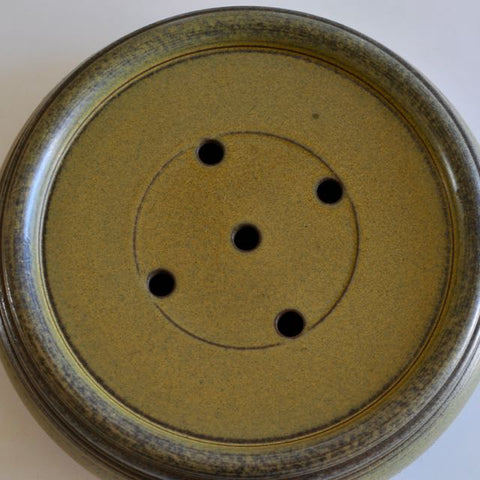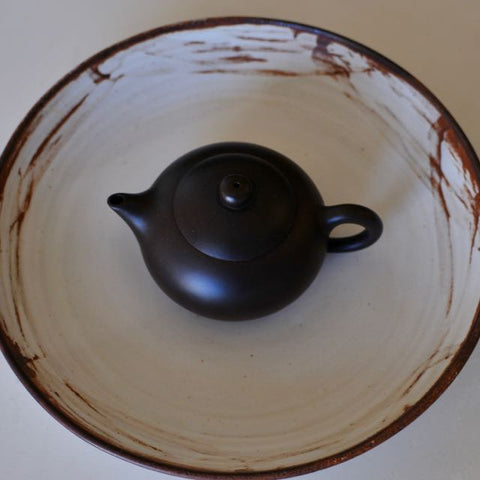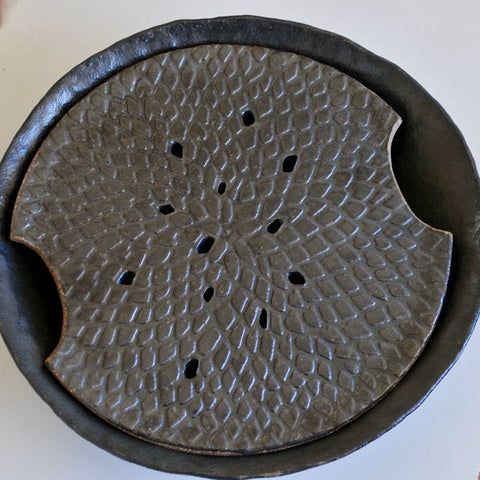Now that we have had a chance to introduce some simple brewing techniques we wanted to share some other tea preparation styles. We know that as we move away from familiar tea brewing methods your eyes might start glazing over. However, if you are already a tea enthusiast and want to get more from your tea experiences it might be time to experiment with Gong Fu Cha. This is my preferred method of tea brewing.

Gong Fu Cha loosely translates to “preparing tea with effort”. Whilst you may have visions of an elaborate and sophisticated tea spectacle Gong Fu Cha can be practiced by anyone and can be performed quite simply with few tea accessories. At its heart we slow down the tea experience. We take time to prepare and make tea and engage all of our senses to appreciate the aroma and flavour the leaves and liquor reveal during each infusion.
The method is characterised by a large quantity of leaves to water ratio (opposite to western style brewing methods) with short steeping times and multiple infusions. Gong Fu Cha is versatile, suiting a solo tea drinker looking for a meditative and deep connection with the tea as well as creating a wonderful shared tea experience with family and friends.
Over the coming weeks we will look at the tools, the method and techniques to get started with Gong Fu Cha.
The Tools
The first tool that I wanted to introduce is the tea sink (also referred to as a tea tray, infusion table or tea table).
The tea sink is one of the central tools used in Gong Fu Cha. It is designed to collect excess water and poured tea. And yes, there will be excess water from washing and cleaning tea accessories particularly whilst mastering your small teapots and gaiwans!
Below is a very simple bamboo tea sink that we like to use for everyday tea drinking as it is light and easy to clean.

The tea sink has a flat surface to place the tea accessories with drainage holes that collect into a recess tray or bowl underneath. They can be made from different materials including bamboo, stone, fired clay and timber.
The tea sink below was purchased in Singapore following an intimate Gong Fu Cha brewing session with a tea master. Despite a lot of tea snacks (dim sum) being eaten during the session we still ended up 'tea drunk'.

Whilst the tea sink is a really practical tool to use, depending on the region or tea service style in China or Taiwan you will also find that a deep, flat bottom porcelain plate or bowl being used. This is a great option for a newcomer as you are likely to have something in your cupboard already.

We particularly love tea sinks that have been handcrafted. Those that are shaped organically and have been given an equal amount of respect and care to produce as the tea leaves.
As the tea sink is traditionally part of the Chinese tea experience it is very difficult to source Australian made tea sinks. The Steepery Tea Co. is a big supporter of local Australian ceramists and believe that they are central in fostering and shaping Australia's emerging tea culture. We approached the extremely talented Mandy from Earth & Baker and convinced her to create a ceramic tea sink for us. Earth & Baker are based on the Gold Coast in Queensland and we were instantly drawn to their Instagram feed showcasing beautiful flat trays and bowls. We believed their style would help transform the traditional Chinese tea sink into a modern and striking piece. Despite the tea sink being challenging to create, Mandy patiently worked on this for a number of months. Whilst the end result was not perfect in Mandy's eyes we are certainly not disappointed! Simply stunning. We promise to share more images of this tea sink in the coming weeks.

At the end of this series we hope that you might be encouraged to try Gong Fu Cha. For your patience and practice we believe you will be rewarded with one of the most enjoyable sensory experiences you will have with tea.